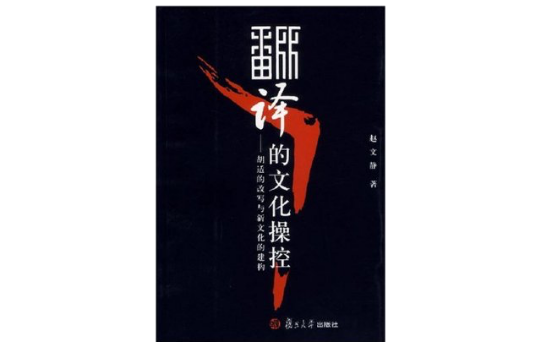圖書信息
ISBN:9787309053098
出版日期:2006-12
印刷日期:2006-12
頁數:398
內容簡介
它以翻譯學文化派的主要代表人物Andre Lefevere的改寫理論為框架,以胡適在新文化運動時期的代表作和譯作為案例,把胡適對西方文學——尤其是Ezra Pound和 Henrik Ibsen的作品——的改寫、翻譯置於歷史、文化的大背景下,論證這些作品在多大程度上是對西方文學理論和作品的翻譯與改寫。從社會、政治、接受美學等角度分析接受環境的主流文化和意識形態如何操控材料的取捨、內容的過濾、成品的接受。還涉及到轉譯、重譯、模仿等形式。
多種形式的改寫在我國現代史中,尤其在新文化運動這一重要歷史轉型期對建構新文學和新文化有著與狹義的翻譯同等重要的作用。然而,這些形式上不明顯的翻譯還沒有真正成為翻譯研究的對象。本書首次從改寫角度研究胡適對新文化運動的貢獻。強調他的改寫翻譯的研究價值和對文學變革的影響。富含新意。作者在利用改寫理論解釋我國翻譯現象的同時,也對該理論進行了批判,這對建設和豐富我國翻譯理論有著積極的意義。
作者在英國曼徹斯特大學翻譯與跨文化研究中心獲得博士學位,本書遵循英倫學術規範,使用地道的學術英語,對材料的印證縝密、論證翔實。文中凡引用或轉述別人的觀點或中外文史資料都詳細註明出處, 加上大量的腳註和書後的參考書目,為同類或後續研究者提供了最新且又豐富的參考資料源。適用於翻譯學、比較文學和比較文化專業的研究人員,特別是翻譯學研究生、高校英語教師和英語專業高年級學生。
國際著名翻譯理論家Mona Baker教授為本書作了序。
目錄
TABLE OF CONTENTS
Foreword
前言
Abstract
Chapter1:Introduction
1.1 Rationale for Focusing on Hu Shi and the New Culture Movement
1.2 Issues Reflected in the Neglect of Hu's Rewritings
1.3 Overview of the Book
1.3.1 Structure
1.3.2 Clarification of Terms and Presentation
Chapter2:Rewriting Theory
2.1 The Theoretical Context Within and Outside Translation Studies
2.1.1 The Shift from a Source-oriented to a Target-oriented Approach
2.1.1.1 Literary Criticism
2.1.1.2 Even-Zohar's Polysystem Theory
2.1.1.3 Hermans' Anthology of Translation Studies
2.1.1.4 Holmes'Concept of Translation Sociology
2.1.2 The Broadening of the Concept of Translation
2.2 Rewriting Theory:An Overview
2.2.1 The Control Factors
2.2.1.1 The Concept of Control Factors
2.2.1.2 Assessing the Notion of Control Factors
2.2.2 Forms of Rewriting
2.2.2.1 Assessing the Classification
Chapter3:Hu Shi Canonised:The Interaction Between Ideology,Poetics and Patronage
3.1 The Hu Shi Canon
3.2 The Macro-Ideological Climate
3.2.1 The Political Situation
3.2.2 Official Attitudes Towards Learning from the West
3.2.3 Reform in Education
3.3 Hu's Seminal“EightDon'ts”,its Nature as Rewriting and its Impact on Literary Circles
3.3.1 The Essay
3.3.2 Hu's Essay as Rewriting
3.3.2.1 The General Influence of the Renaissance Model
3.3.2.2 The Influence of Pound's“A Few Don'ts”
3.3.3 The Impact on Chinese Language,Literature and Translation
3.4 Institutional Settings and Patronage
3.4.1 Hu Shi and New Youth
3.4.2 Hu Shi and Beijing University
3.4.3 Support from Professionals
3.5 Conclusion
Chapter4:Hu Shi's Rewritings of Ibsen and Their Impact on Chinese Society
4.1 Ibsen as Seen in the Eyes of His English Rewriters
4.1.1 Major Sources Through Which Hu Shi Accessed Ibsen
4.1.2 William Archer's Translation of Ibsen:Authoritative and Poetics-oriented
4.1.3 George Bernard Shaw's Interpretation of Ibsen
4.2 Hu Shi's Critical Essay“Ibsenism”
4.2.1 Production of the Essay
4.2.2 Some Textual Analysis of the Essay
4.2.3 Ibsenism or Hu-Shi-ism?
4.2.4 Hu's Filtering
4.2.5 Conclusion
4.3 Hu Shi's Imitation of Ibsen:Life s Greatest Event
4.3.1 Hu's One-act Play
4.3.2 The Ideological and Poetological Needs of the Target Culture
4.3.3 Comparative Analysis of Ibsen's and Hu Shi's Plays
4.3.4 Conclusion
Chapter5:Contextual and Textual Analyses of Hu Shi's Translations
5.1 Choice of Source Cultures
5.1.1 Indirect Translations
5.1.2 Russian and French Short Stories
5.1.3 The Impact of Hu's Choices on Chinese Literary Creativity and Translation Output
5.2 Generic Choices
5.2.1 Introducing General Trends in World Literature
5.2.2 Lessons Drawn From Liang Qichao's Failure in Advocating“Political Fiction”
5.2.3 Introducing Innovative Writing Techniques
5.3 Thematic Choices
5.3.1 Patriotism in the Face of Foreign Invasions
5.3.2 Individualism and Women's Position in the Family
5.3.3 Opium and the Apathetic State of the Population
5.3.4 Mirroring the Life of the Oppressed and the Victimised
5.4 Hu's Translation'S trategies
5.4.1 Domesticating Imported Elements
5.4.2 Contextualising and Historicising Foreign Elements for Chinese Readers
5.4.3 Interventions in and around the Text
5.5 Conclusion
Chapter6:Conclusion
Bibliography
Appendix1
Appendix2

